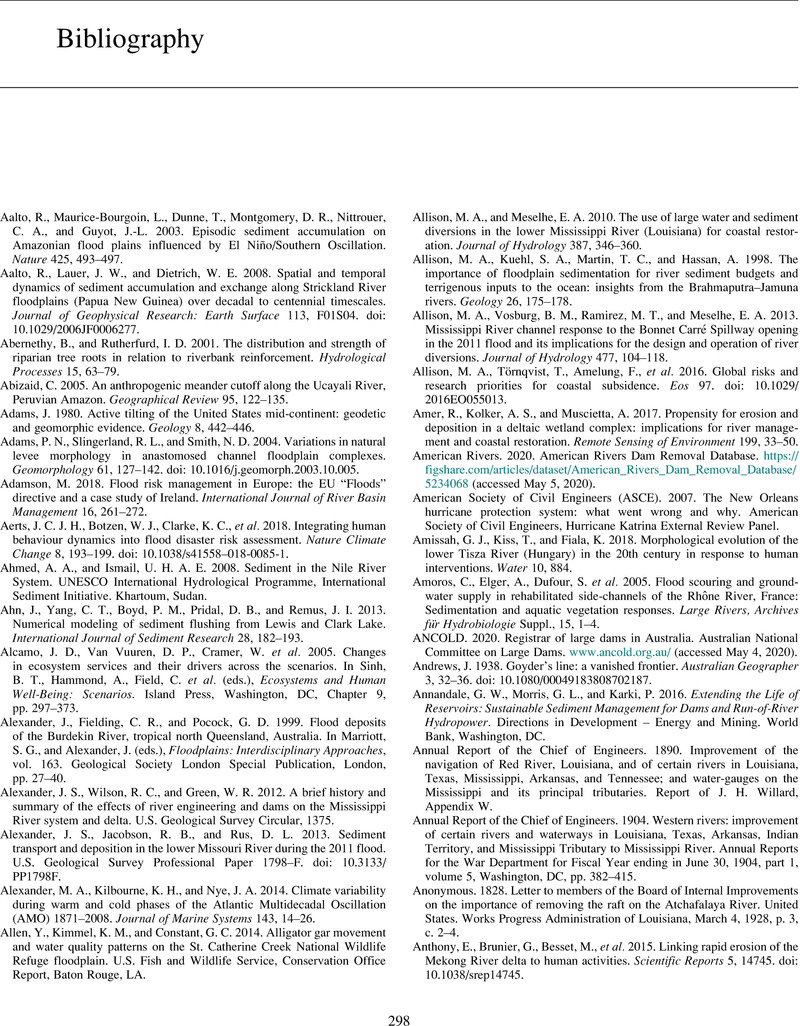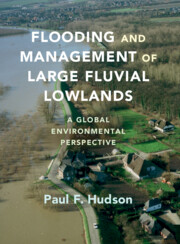Book contents
- Flooding and Management of Large Fluvial Lowlands
- Flooding and Management of Large Fluvial Lowlands
- Copyright page
- Dedication
- Contents
- Figures
- Tables
- Preface and Acknowledgments
- 1 Fluvial Lowlands and the Environment
- 2 Rivers and Landscapes
- 3 Hydrologic and Geomorphic Processes in Fluvial Lowlands and Deltas
- 4 Dams, Rivers, and the Environment
- 5 Hydraulic Engineering for Channel Stability and Flood Control
- 6 Dikes and Floodplains
- 7 Flood Basins and Deltas
- 8 Toward Integrated Management of Lowland Rivers
- 9 Lessons Learned
- Bibliography
- Index
- References
Bibliography
Published online by Cambridge University Press: 04 November 2021
- Flooding and Management of Large Fluvial Lowlands
- Flooding and Management of Large Fluvial Lowlands
- Copyright page
- Dedication
- Contents
- Figures
- Tables
- Preface and Acknowledgments
- 1 Fluvial Lowlands and the Environment
- 2 Rivers and Landscapes
- 3 Hydrologic and Geomorphic Processes in Fluvial Lowlands and Deltas
- 4 Dams, Rivers, and the Environment
- 5 Hydraulic Engineering for Channel Stability and Flood Control
- 6 Dikes and Floodplains
- 7 Flood Basins and Deltas
- 8 Toward Integrated Management of Lowland Rivers
- 9 Lessons Learned
- Bibliography
- Index
- References
Summary

- Type
- Chapter
- Information
- Flooding and Management of Large Fluvial LowlandsA Global Environmental Perspective, pp. 298 - 325Publisher: Cambridge University PressPrint publication year: 2021



